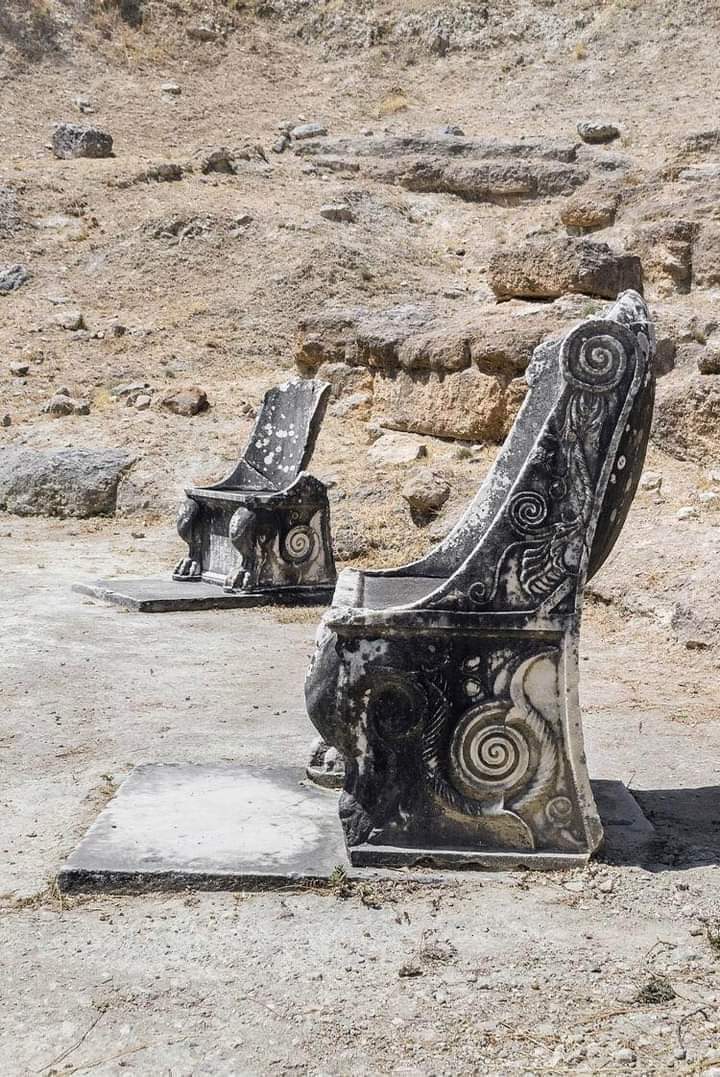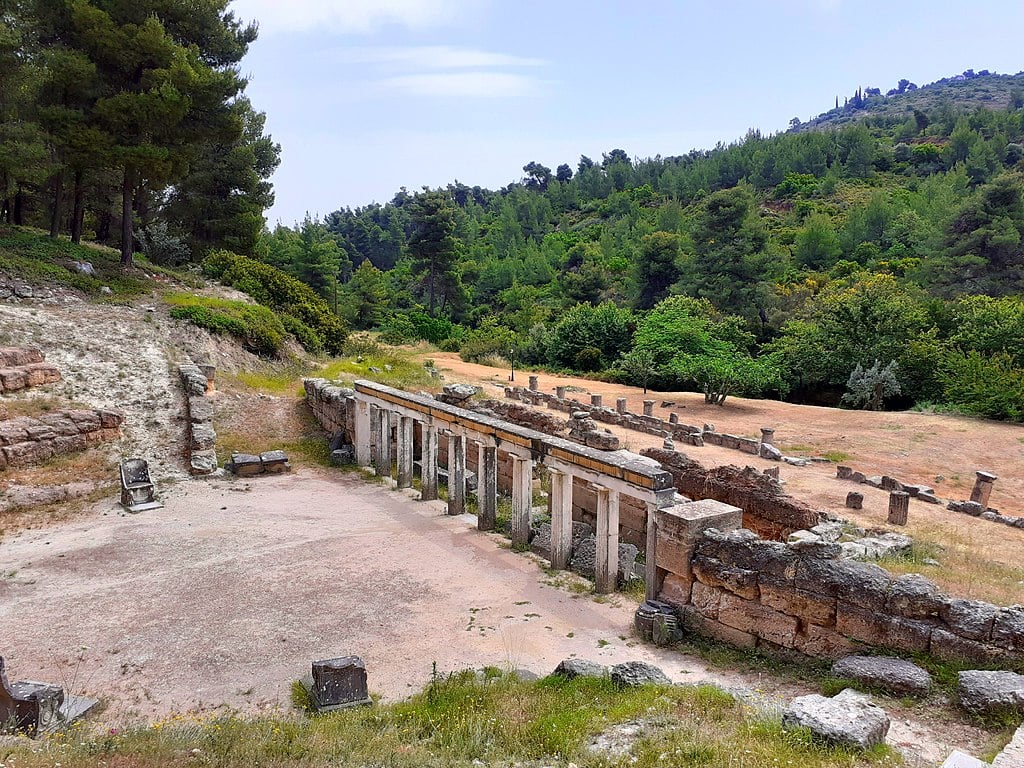Nestled amidst the tranquil hills of Oropos, Greece, the Amphiareion of Oropos stands as a poignant reminder of the sacred spaces that shaped the spiritual and cultural life of ancient Greece. Dedicated to the hero Amphiaraos, this sanctuary was a revered destination for pilgrims seeking divine guidance and miraculous healing. Among its many fascinating features, the theatre’s five marble prohedria—ornately carved honorary thrones—are enduring symbols of the artistry, faith, and social hierarchies that defined this sacred site.
A Sanctuary for the Hero Amphiaraos
The Amphiareion was more than a religious center; it was a place where mythology and medicine converged. Devotees visited the sanctuary with hopes of receiving oracular revelations and physical healing. Central to this experience was the enkoimeterion, a large stoa constructed in the mid-4th century BCE, where patients would sleep, awaiting divine visions from Amphiaraos, the hero-turned-healer. This process, known as incubation, reflected the belief that dreams could reveal remedies and answers from the divine realm.

Amphiaraos, a legendary figure known for his dual roles as a seer and a warrior, was venerated as both a prophet and a healer. The sanctuary thus served as a vital intersection of faith and well-being, attracting pilgrims from across the ancient Greek world.
The Theatre and Its Marble Thrones
The sanctuary’s theatre, built during the 2nd century BCE, was a focal point for communal gatherings, rituals, and dramatic performances honoring Amphiaraos. Originally, the seating area consisted of wooden benches on stone supports, accommodating audiences eager to witness theatrical and ceremonial events.

However, the theatre’s most remarkable feature lies in its five prohedria—marble thrones reserved for esteemed individuals, such as priests, dignitaries, and other honored guests. Positioned around the orchestra, these thrones were more than functional; they symbolized status and reverence. Their intricate carvings and inscriptions hint at the artistic sophistication of ancient Greek craftsmanship and underscore the importance of communal rituals in honoring the divine.
Artistry and Spirituality in Harmony
The prohedria embody the seamless fusion of functionality, artistic excellence, and spiritual devotion. Their prominent placement in the theatre signifies their dual purpose: providing seats of honor and creating a visual testament to the sanctity of the ceremonies. The marble thrones’ enduring presence speaks to the care and skill of the artisans who crafted them, ensuring their role as both utilitarian objects and works of art.

These thrones also reveal the societal values of ancient Greece, where hierarchical seating arrangements reinforced social and religious structures. The prohedria allowed select individuals to embody the bridge between mortals and the divine during sacred performances and rituals.
A Living Legacy
While time has weathered the Amphiareion, its marble thrones remain steadfast, offering modern visitors a tangible connection to a world where gods and mortals coexisted in sacred spaces. They remind us of the profound role that art, architecture, and faith played in shaping ancient societies.
The Amphiareion and its theatre continue to inspire scholars and enthusiasts alike, providing invaluable insights into the intersection of mythology, healing, and communal life. The marble prohedria, in particular, stand as a timeless testament to the creativity and devotion of ancient Greek artisans, immortalizing a legacy that resonates through the ages.
The marble thrones of the Amphiareion are not merely relics of the past; they are echoes of divinity, bridging the realms of history and spirituality, art and faith, and humanity and the divine.

